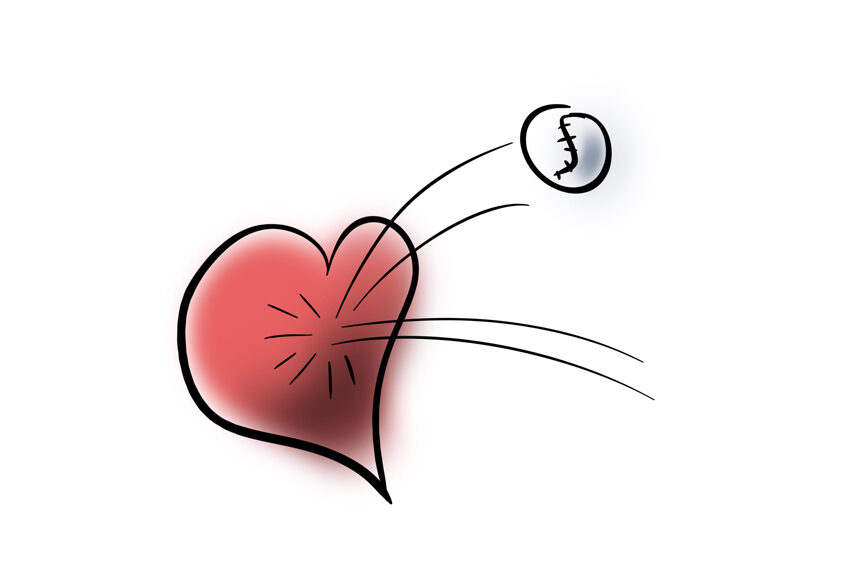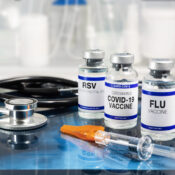“Your Health Checkup” is our online column by Dr. Douglas Zipes, an internationally acclaimed cardiologist, professor, author, inventor, and authority on pacing and electrophysiology. Dr. Zipes is also a contributor to The Saturday Evening Post print magazine. Subscribe to receive thoughtful articles, new fiction, health and wellness advice, and gems from our archive.
Order Dr. Zipes’ books, Ari’s Spoon, a new novel, as well as Bear’s Promise and Damn the Naysayers, A Doctor’s Memoir. Check out his website at dougzipes.com.
I’ve fielded many questions about commotio cordis, the apparent diagnosis explaining the cardiac arrest that happened to Buffalo Bills safety Damar Hamlin following a tackle, and whether we should fear a repeat for ourselves, our children, or our grandchildren playing in a sport.
Commotio cordis is the term applied to development of a life-threatening rapid heart rhythm (ventricular fibrillation, or VF) from a blow to the chest in the area directly over the heart. The impact from a baseball, hockey puck, or other hard object must occur at an exact time during a window of 20 milliseconds between heartbeats, and of sufficient force, to be transmitted to the heart through the chest wall.
The presumptive mechanism is a sudden increase in pressure in the heart’s lower cavity (ventricle) that disrupts the normal organized heart rhythm and triggers VF. With prompt cardiopulmonary resuscitation (CPR) and a shock from an automated external defibrillator (AED), the VF can be terminated, and the person resuscitated, as was the case for Hamlin. Without such treatment, death usually follows. Time — literally, seconds — is crucial. For victims of cardiac arrest, each lost minute lowers the odds of survival by 10 percent. It is crucial to have an AED available and a plan ready to administer it.
A video showing commotio cordis during a karate match can be found on YouTube. [Warning: viewer discretion is advised since this is a traumatic scene.]
Sudden cardiac arrest continues to be a too-common cause of death throughout the world. In the U.S. alone, 300,000 to 350,000 deaths each year are attributed to sudden cardiac arrest. Picture three airplanes loaded with passengers crashing every day!
Too often cardiac arrest is the victims’ first evidence of underlying heart disease, such as coronary artery disease (CAD). These numbers may rise with the escalating incidence of heart failure, an aging population in industrialized nations, and the growing prevalence of CAD in developing countries. Hundreds of thousands of lives could be saved each year if AEDs were readily available to victims of cardiac arrest.
I have advocated that CPR be taught to students in schools across the nation to increase the cadre of people able to administer CPR during a cardiac arrest.
I have also advocated for wide distribution of AEDs for many years, not just at all sporting events, but in neighborhoods as well. AEDs are lightweight, portable, relatively inexpensive, and easy to use. Like fire extinguishers, they may be rarely needed, but when they are, they save lives.
AEDs should be as available as fire extinguishers. However, unlike fire extinguishers that are required in public places and are found in one-half to two-thirds of homes, AEDs have been considerably more difficult to locate in public places and are almost unheard of in private residences — ironically, where two-thirds of cardiac arrests occur. Governmental efforts have made them more available in many public places such as airports and airplanes, and in federal buildings.
At present, less than 5-10 percent of people across the U.S. who suffer out-of-hospital cardiac arrest survive. Certain cities, such as Seattle, Miami, and Detroit, and even some Las Vegas gambling establishments, have higher survival rates because of intense civilian rescue training and strategic deployment of AEDs. But consider the chances of survival from VF in a high-rise apartment building in a densely populated area, such as New York City, or in a rural area many miles from the fire or police department.
Some countries have used trained teams of neighbors to administer CPR and to deliver a shock with an AED placed in strategic locations throughout the neighborhood. Depending on the community’s configuration and density, an AED might be centralized in the middle of several blocks or streets, distributed on floors of high-rise apartments or otherwise dispensed in concentrated areas of population. Then, when a cardiac distress call comes in to the “911” dispatch center, it would immediately be shunted to both the paramedics and the nearest AED-equipped and -trained neighbor. The first to arrive would administer CPR and an AED shock. Swedish health care workers use drones to distribute AEDs.
AEDs offer the means to save many lives if we have the will to provide them.
Become a Saturday Evening Post member and enjoy unlimited access. Subscribe now



